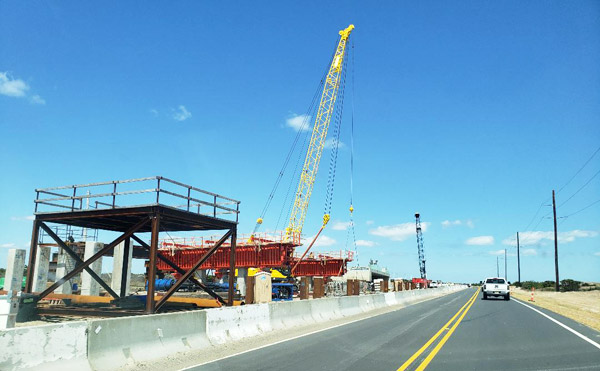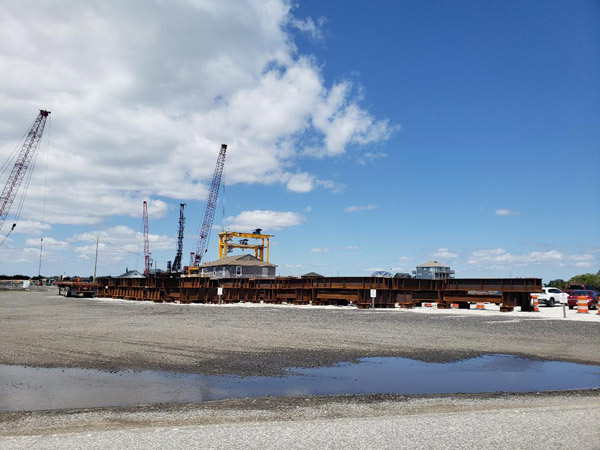
Work on the Jug Handle Bridge is steadily progressing while finishing touches on the new Oregon Inlet Bridge will likely require daytime road closures through June 15, per the projects’ resident engineer, Pablo Hernandez.
At the new Oregon Inlet Bridge, crews are working on a “punch list” of finishing touches, such as cleaning excess concrete splatters, adding final bolts, and other small tasks. As such, daytime lane closures will continue into June, when they are temporarily halted until September 15 to accommodate summertime traffic.
“Depending on what the contractor decides to do this summer, they may opt to continue to work at night, or the daytime lane closures may resume in the fall,” said Hernandez.
The lane closures also allow trucks to carry equipment and materials to the new Jug Handle Bridge construction site, which is an important function now that the old Bonner Bridge is in the process of being dismantled.
At the Jug Handle Bridge site, work is steadily progressing at both the southern and northern terminals of the planned 2.4-mile long structure. The Jug Handle Bridge is considered part of Phase II of the Bonner Bridge Replacement Project, and is the last of the three bridges within the project guidelines to be built. The bridge will effectively bypass the S-Turns section of N.C. Highway 12 north of Rodanthe, which is highly susceptible to breaches during storms.

At the southern terminal in Rodanthe, the machinery and equipment that will effectively serve as a rail system to carry materials out into the water has been built, and the initial in-the-water work has already begun. Using the rail system, the project will essentially “leap frog” as it jets out into the water, with crews completing 1,500 feet sections of the bridge at a time.
Activity has also heated up at the northern terminal of the bridge, with multiple projects being tackled at once. A subcontractor on site is installing concrete sheet piles that will serve as a retaining wall that will allow vehicles to drive up on the completed bridge – similar to what’s established at the new Pea Island Inlet Bridge. Flatiron Construction is also at the site, driving the concrete pilings for the first six spans of the bridge at the northern end, and pouring the concrete for the caps, which are the parts that tie the pilings together.
Cape Hatteras Electric Cooperative crews are concurrently working on installing new aerial lines for temporary power, (as the old ones will have to be moved), while a duplicate rail system is also being created to mirror the one at the southern terminal construction site. All the while, crews are steadily working towards the water, where the northern side of the bridge will eventually connect with the southern side.
“At this point, we have about 1,000 feet of the [Pea Island National Wildlife] Refuge to cross before we get to the water’s edge,” said Hernandez.
Based on the current schedule, the Jug Handle Bridge is expected to open to traffic by late 2020.








